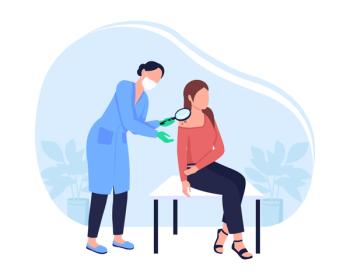
Payers Have Room for Improvement in Delivering Pain Care, Study Says
Using the example of low back pain, a study in JAMA Open suggests insurers could help to reduce opioid overuse by expanding access to nonopioid alternatives through improved coverage and reimbursement policies.
Using the example of low back pain, a study in JAMA Open suggests insurers could help to reduce opioid overuse by expanding access to nonopioid alternatives through improved coverage and reimbursement policies.
However, little is known about pain medication coverage policies among insurers, even as the issue has taken on new urgency among payers and policy makers alike. Between 1999 and 2010, opioid-related overdose deaths rose in parallel with the increased prescribing of opioids.
A recent study said in 2016,
Researchers reviewed health plan documents from 15 Medicaid, 15 Medicare Advantage, and 20 commercial health plans in 2017 from 16 states representing more than half of the US population, and looked at 62 products to treat pain.
They also conducted 20 interviews with more than 43 senior medical and pharmacy health plan executives, who indicated there is a lack of comprehensive strategies to improve chronic pain treatment and to better integrate pharmacologic and nonpharmacologic opioid alternatives.
Those interviewed said plans tended to emphasize utilization management, such as quantity limits and prior authorization, and other strategies to decrease opioid overuse, instead of other ways to improve the quality of care for individuals with chronic noncancer pain. The researchers said improving high-quality, evidence-based pain care "represents a critical opportunity to reverse the momentum of the opioid epidemic."
Nonopioids were also subject to restrictions by some payers, the study found. Step therapy was also especially uncommon.
Of the 62 products examined, 30 were prescription opioids and 32 were nonopioid analgesics, including 10 nonsteroidal anti-inflammatory drugs; 10 antidepressants; 6 muscle relaxants; 4 anticonvulsants; and 2 topical analgesics.
Medicaid plans covered a median of 19 opioids examined (interquartile range [IQR], 12-27; median, 63%; IQR, 40%-90%) and a median of 22 nonopioids examined (IQR, 21-27; median, 69%; IQR, 66%-83%). Medicare Advantage plans covered similar proportions (median [IQR], opioids: 17 [15-22]; 57% [50%-73%]; nonopioids: 22 [22-26]; 69% [69%-81%]).
Commercial plans covered more opioids (median [IQR], 23 [21-25]; 77% [70%-84%]) and nonopioids (median [IQR], 26 [24-27]; 81% [74%-85%]).
Utilization management strategies were common for opioids in Medicaid plans (median [IQR], 15 [11-20] opioids; 91% [74%-97%]), Medicare Advantage plans (median [IQR], 15 [9-18] opioids; 100% [100%-100%]), and commercial plans (median [IQR], 16 [11-20] opioids; 74% [53%-94%]), generally relying on 30-day quantity limits rather than prior authorization.
Many of the nonopioids also were subject to utilization management, especially quantity limits (24%-32% of products across payers) and prior authorization (median [IQR], commercial plans: 2 [0-3] nonopioids; 9% [0%-11%]; Medicare Advantage plans: 4 [3-5] nonopioids; 19% [10%-23%]; Medicaid plans: 6 [1-13] nonopioids; 38% [2%-52%]).
Among commercial plans, the median plan placed 18 opioids (74%) and 20 nonopioids (81%) in tier 1, which was associated with a median out-of-pocket cost of $10 (IQR, $9-$10) per 30-day supply.
Interviews with executives revealed an emphasis on increasing opioid utilization management and identifying high-risk prescribers and patients, rather than promoting comprehensive strategies to improve treatment of chronic pain or better integrating pharmacologic and nonpharmacologic alternatives to opioids, the study said.
Reference
Lin DH, Jones CM, Compton WM, et al. Prescription drug coverage for treatment of low back pain among US Medicaid, Medicare Advantage, and commercial insurers. JAMA Network Open. 2018;1(2):e180235. doi:10.1001/jamanetworkopen.2018.0235.
Newsletter
Stay ahead of policy, cost, and value—subscribe to AJMC for expert insights at the intersection of clinical care and health economics.





























































